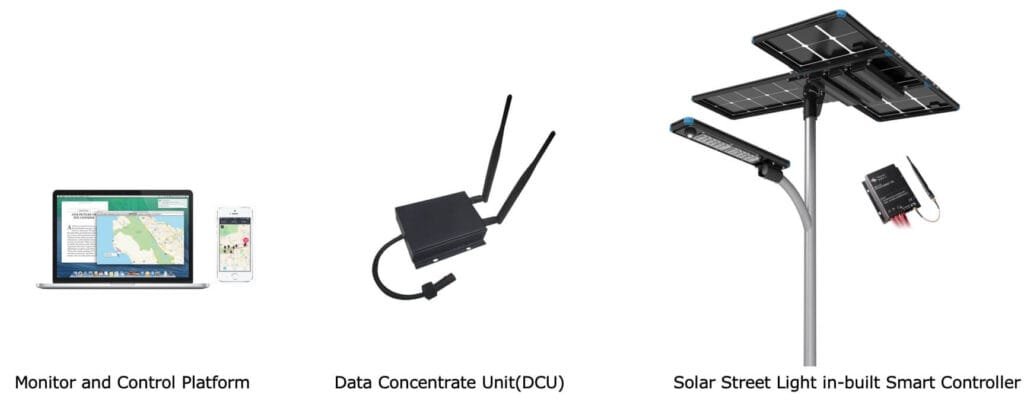I still remember one of my first large municipal projects back in West Africa. We had constant power outages, skyrocketing maintenance costs, and dozens of dark, unsafe roads. It was there that I realized how transformative smart solar streetlights can be — not just for cost savings, but for making streets genuinely safer and cities more resilient.
Smart solar streetlights combine renewable solar energy with intelligent controls to create lighting systems that can adapt in real time, reduce operating costs, and improve public safety. They're not just another trend; they're a practical solution that more and more cities and businesses are embracing.
The Shift Toward Smarter, Cleaner Lighting
Cities everywhere are moving beyond outdated grid-based lighting systems. It isn’t only about cutting carbon footprints; it's about operational reliability and community well-being.
- Solar power dramatically cuts energy bills. In some of my recent projects, we’ve seen reductions of around 50% — even higher in sunny regions.
- Adaptive dimming technology reduces unnecessary energy use while keeping streets safe.
- Centralized monitoring dashboards help maintenance teams respond faster and avoid surprise outages.
- The modular nature[^1] makes it easier to expand lighting coverage without massive infrastructure upgrades.
What Exactly Is a Smart Solar Streetlight?
At its core, a smart solar streetlight is a solar-powered lighting fixture equipped with advanced controllers, sensors, and connectivity module[^2]s.
Unlike conventional solar lights that simply turn on at dusk and off at dawn, these smarter versions can adjust brightness automatically, detect motion, and even integrate with centralized software for remote monitoring.
Where Do They Work Best?
- Major city avenues and highways
- Large industrial complexes and logistics parks
- Remote villages and island communities without stable grid access
- Parks, resorts, and university campuses
The Key Components Explained

Solar Panel
Collects sunlight and charges the system battery during the day. From experience, correct tilt angle (usually 30–40°) can impact efficiency by 10–15% — something many overlook.
Battery
Stores energy for nighttime use. Today, LiFePO₄ batteries[^3] are preferred for their heat tolerance and longer life, though budget-sensitive projects might still use standard Li-ion.
LED Fixture[^4]
Provides efficient, bright illumination. While manufacturers sometimes claim 200 lm/W, in real-world projects we typically see around 150 lm/W — which is still excellent.
Smart Controller
Manages everything from charging cycles to dimming schedules. In one coastal project, integrating motion sensors with a smart controller helped us cut energy consumption by almost 60%.
Motion & Light Sensors
Trigger brighter light when people or vehicles approach and reduce brightness during quiet periods. However, precise calibration is critical — in one foggy mountain installation, we had to fine-tune settings to avoid false triggers.
Connectivity Module
Allows remote monitoring and data reporting (using LoRa, NB-IoT, GSM, or WiFi). Strong local signal coverage is key — I’ve seen connectivity issues in rural valleys where GSM drops out completely.
Pole & Housing
Typically die-cast aluminum for corrosion resistance. Early in my career, we tried cheaper steel poles on a coastal site, which later needed replacement due to salt air corrosion — a lesson we won’t forget.
How It All Works Together
- Solar panel charges the battery during the day.
- As dusk falls, the controller switches on the LED fixture.
- Motion and ambient light sensors adjust brightness dynamically.
- The controller manages battery health and usage patterns to extend lifespan.
- Data is sent to a central dashboard for real-time monitoring and maintenance alerts.
Smart Features That Stand Out

Adaptive Dimming & Motion Detection
- Reduces energy consumption during low-traffic hours.
- Instantly brightens to improve safety when movement is detected.
- Requires careful sensor placement to avoid false positives from stray animals or weather.
Advanced Battery Management
- Prevents overcharging and deep discharge.
- Provides battery health analytics for preemptive maintenance.
- Realistically, even with smart management, batteries still require replacement after 5–7 years.
Remote Fault Monitoring
- Alerts maintenance teams immediately about performance issues.
- Cuts down on routine inspections and reduces emergency repairs.
Environmental Response
- Sensors adjust brightness during foggy, rainy, or dusty conditions.
- Additional sensors can be added but should be chosen wisely to match project needs and avoid unnecessary costs.
MPPT vs. PWM Charging[^5]
- MPPT (Maximum Power Point Tracking) improves efficiency, particularly valuable for larger installations, though it’s more expensive.
- PWM (Pulse Width Modulation) is more budget-friendly and fine for smaller or simpler setups.
Main Advantages
- 🌞 Significant Energy Savings: Up to 60% with adaptive controls[^6].
- 🔧 Lower Maintenance Costs: Fewer on-site checks thanks to smart alerts.
- 📊 Better Data & Insights: Helps justify budgets and improve future planning.
- 💡 Enhanced Safety: Immediate response to pedestrian and vehicle movement.
- 🌱 Eco-Friendly: Zero grid dependence, lower emissions.
Where They Have the Biggest Impact
- City highways and wide avenues
- Logistics and industrial yards
- Off-grid rural roads
- Resorts, campuses, and coastal walkways
A Real-World Example

Location: Regional city in West Africa
Challenge: High energy costs, frequent blackouts, dark public spaces
Approach: Installed 500 smart solar lights with LoRa connectivity and PIR motion sensors
Outcome:
- Reduced lighting expenses by 55% in the first year.
- Significantly improved public safety and nighttime activity.
- Maintenance crews now monitor all units through a single dashboard, saving both time and operational costs.
FAQs
How long do these lights last?
→ Typically 8–10 years with proper battery replacements.
Do they work during cloudy periods?
→ Yes. Most designs store enough energy to last 2–3 cloudy days, but extended overcast periods may still affect brightness.
What connectivity is used?
→ Depending on local conditions: LoRa, NB-IoT, GSM, or WiFi.
How much can you save?
→ In many projects, up to 60% savings, though 40% is more common in areas with heavy rain or fog.
Are they really weatherproof?
→ Absolutely — most designs meet at least IP65 standards. But correct installation and local adjustments are crucial.
Conclusion: A Smarter, Safer, Greener Choice
Smart solar streetlights go beyond simply “being green.” They make public spaces safer, empower cities with real-time data, and significantly cut operating costs.
These systems do require upfront planning and honest assessments of local conditions — I’ve seen projects fail when corners were cut on batteries or network coverage. But when thoughtfully designed and properly installed, the benefits are undeniable.
Curious about implementing smart solar streetlights?
Let’s discuss how to tailor a system that works reliably in the real world, not just on paper. 🌟
[^1]: Understand the benefits of modular systems for expanding lighting coverage efficiently.
[^2]: Learn about the importance of connectivity modules for remote monitoring and data.
[^3]: Explore why LiFePO₄ batteries are preferred for their longevity and heat tolerance.
[^4]: Learn how LED technology enhances brightness and energy efficiency in streetlights.
[^5]: Learn about the charging technologies that enhance efficiency in solar streetlights.
[^6]: Explore how adaptive controls can lead to significant energy savings in street lighting.


